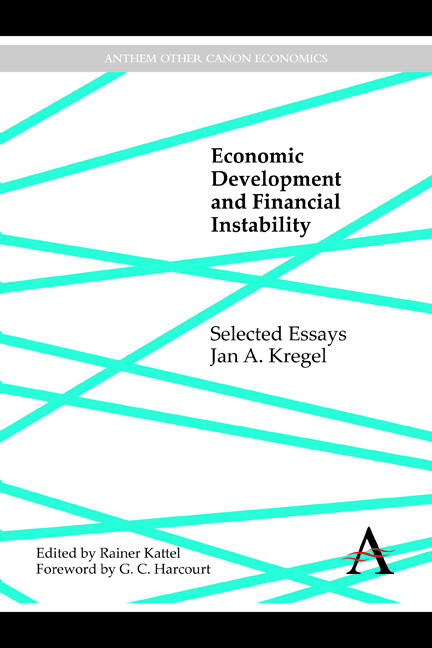Book contents
- Frontmatter
- Contents
- Foreword
- Publication History
- I Theoretical Discussions
- 1 Financial Markets and Economic Development: Myths and Institutional Reality
- 2 External Financing for Development and International Financial Instability
- 3 Capital Flows: Globalization of Production and Financing Development
- 4 Some Risks and Implications of Financial Globalization for National Policy Autonomy
- 5 Two Views on the Obstacles to Development
- 6 Can We Create a Stable International Financial Environment that Ensures Net Resource Transfers to Developing Countries?
- 7 Natural Instability of Financial Markets
- 8 Trying to Serve Two Masters: The Dilemma of Financial Regulation
- II Finance for Development
- III The Crisis in the US and the EU
- Index
4 - Some Risks and Implications of Financial Globalization for National Policy Autonomy
from I - Theoretical Discussions
Published online by Cambridge University Press: 05 November 2014
- Frontmatter
- Contents
- Foreword
- Publication History
- I Theoretical Discussions
- 1 Financial Markets and Economic Development: Myths and Institutional Reality
- 2 External Financing for Development and International Financial Instability
- 3 Capital Flows: Globalization of Production and Financing Development
- 4 Some Risks and Implications of Financial Globalization for National Policy Autonomy
- 5 Two Views on the Obstacles to Development
- 6 Can We Create a Stable International Financial Environment that Ensures Net Resource Transfers to Developing Countries?
- 7 Natural Instability of Financial Markets
- 8 Trying to Serve Two Masters: The Dilemma of Financial Regulation
- II Finance for Development
- III The Crisis in the US and the EU
- Index
Summary
A. Globalization of Finance Leads Globalization of Trade and Production
Despite the fact that world trade has expanded at rates which have exceeded global income growth over much of the post-war period, financial transactions have expanded at an even more rapid pace. Indeed, the factor which appears to distinguish the rapid international economic integration initiated in the 1980s is the globalization of finance. It is no exaggeration to speak of a global capital market which is in operation 24 hours a day, with financial service providers from the major developed and developing counties operating on a more or less continuous basis. Such conditions are not yet commonplace for manufacturing firms, and there is as yet no truly global market for manufactured goods. Nor is there truly global production in the sense that manufacturers are indifferent to the location of the production process, although there are some firms that have started to integrate their production processes and sales on the basis of regional geography. Although it is not difficult to imagine a process in which each individual step in the production process could be allocated to its most efficient global location, and that location adjusted on a real time basis according to changes in relative costs and prices, that day has not yet arrived – and there are some compelling reasons to believe that it will not do so in the near future.
Information
- Type
- Chapter
- Information
- Economic Development and Financial InstabilitySelected Essays, pp. 63 - 74Publisher: Anthem PressPrint publication year: 2014
